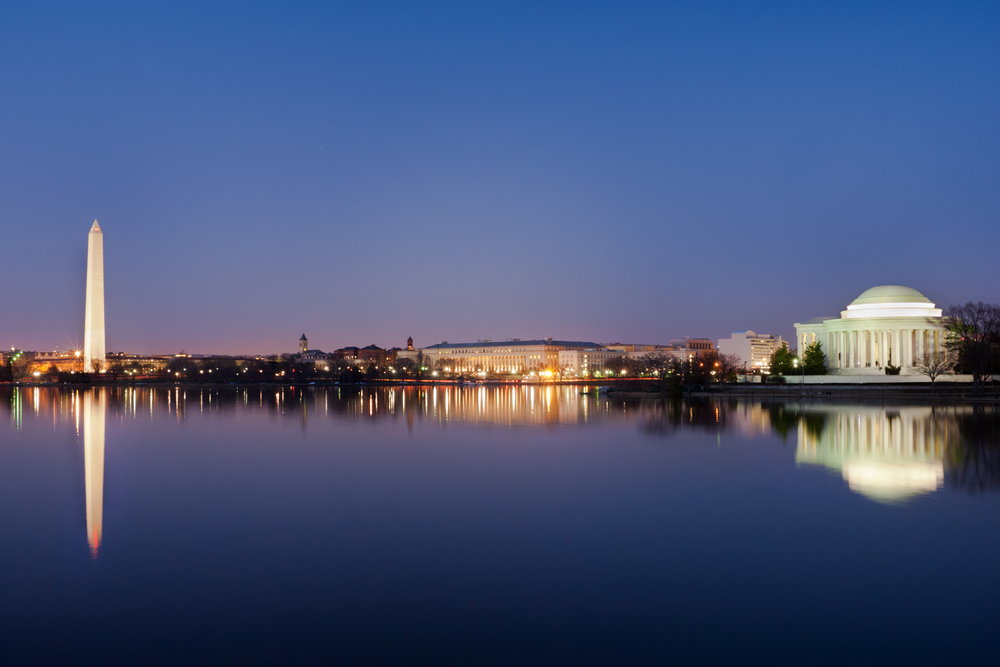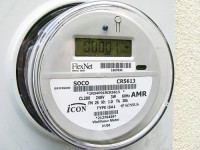Washington, D.C.: Energy-Efficient Building Policy

Washington, D.C.: Energy-Efficient Building Policy
Return to Main City Efficiency Policy Page
Washington, D.C., released its first sustainability plan, "A Vision for a Sustainable D.C.," in April 2012. D.C. stepped ahead of the curve first in 2006 with the Green Building Act which required all buildings built in the district to be LEED certified; then in 2008, D.C. passed both the Clean and Affordable Energy Act (CAEA) which requires benchmarking for all commercial buildings, and the 2008 D.C. Construction Codes which made D.C.’s building codes one of the most advanced green codes in the country through a standard requiring buildings to be 20% more efficient than previous city codes.
The Green Building Act of 2006
Why Buildings? There are two significant reasons for targeting energy usage in buildings in the District. The first is that DC’s buildings produce 75% of the District’s greenhouse gas (GHG) emissions.1 The second has to do with reducing operating costs – at 32%, energy expenses are the largest operating cost for office buildings in the downtown area.2 |
Prior to the Green Building Act of 2006, the city required that new government buildings obtain LEED certification. The new act extended that requirement to all new construction in the District. The act also required that the mayor submit a comprehensive set of green building codes by January 2008.
The 2008 D.C. Construction Codes
As a result of the Green Building Act, D.C. enacted new construction codes pertaining to residential and commercial properties that included many environmental and energy amendments. This was a very important part of the Building Act and moved D.C. from an outdated code to one of the most advanced green codes. The codes were passed and took effect immediately in 2008. Some of the most important green amendments included: ENERGY STAR© cool roofs for low-rise residential buildings, commercial and residential low-flow plumbing fixtures, and improved commercial energy efficiency.
Read more on D.C.’s Building Codes.
The Clean and Affordable Energy Act of 2008
The Clean and Affordable Energy Act (CAEA) was passed unanimously by the D.C. Council on July 15, 2008, and signed into law Aug. 4, 2008. A major provision of this act was the requirement for annual rating and disclosure of the city’s commercial and public buildings. The act also set up a Sustainable Energy Utility that administers renewable energy and efficiency programs.
Benchmarking and Disclosure
In order to ensure that building owners and tenants consider energy use in buildings, the CAEA included a rating and disclosure component. Under the auspices of this law, building owners must use the Energy State Portfolio Manager to measure how much energy their buildings are using and disclose the results on a public website. Without measuring energy use, there is no way to manage it. Under this law, building owners can find out where they stand in terms of energy usage, and tenants can decide where to rent based on how much they will have to pay for energy.
By 2010, public buildings of at least 50,000 square feet were rated using ENERGY STAR, and the results were disclosed on a public website. Commercial buildings are given a one year grace period between when they must disclose their ratings to the government and when the scores will be published for the public in order to allow landlords time to fix problems they may have found. Benchmarking for commercial buildings is done on an incremental timeline. The largest buildings of 200,000 square feet or more had a July 1, 2011, deadline to submit their numbers, and each year smaller buildings, by an increment of 50,000 square feet, must report their numbers. The last deadline is for buildings 50,000 – 100,000 square feet to submit their ratings by April 1, 2011.
Sub-Metering
 An additional step building owners can take is to install sub-meters that allow them to see and pass along the cost of how much electricity and gas individual tenants are using. The CAEA contains provisions that require the Public Service Commission to write rules and standards to allow for sub-metering. This law allows building operators to install the sub-meters and charge tenants according to how much energy they use, as utilities would for individual buildings. This not only makes the charges more fair and accurate, but also gives individual tenants incentives to save energy.
An additional step building owners can take is to install sub-meters that allow them to see and pass along the cost of how much electricity and gas individual tenants are using. The CAEA contains provisions that require the Public Service Commission to write rules and standards to allow for sub-metering. This law allows building operators to install the sub-meters and charge tenants according to how much energy they use, as utilities would for individual buildings. This not only makes the charges more fair and accurate, but also gives individual tenants incentives to save energy.
Sustainable Energy Utility
The D.C. Sustainable Energy Utility (SEU) offers efficiency and renewable energy funding for residential, commercial, multi-family and mixed-use buildings independent from Energy Service Company (ESCO) or utilities. The CAEA established the SEU, which is funded through a surcharge on D.C. utility bills, but it is administered as a private entity. The SEU goals are to reduce the city energy consumption, create green jobs, and achieve other ambitious goals. It is modeled after the Vermont Energy Investment Corporation which also leads the SEU implementation.
What Next?
Sustainable DC
Sustainable DC utilizes the expertise of the D.C. Office of Planning, the District Department of Environment, D.C. residents, experts and local businesses. The plan focuses on nine topic areas, each of which had its own working group. Some major initiatives of the plan include cutting energy consumption in D.C. by 50%, increasing renewable energy production to 50% and providing low-income home weatherization programs. Implementation of the plan is set to begin in the fall of 2012.
More Washington Energy Resources
- The Institute for Market Transformation (IMT):
- Building Codes Assistance Project (BCAP): DC: From Zero to Sixty
Footnotes
[2]https://hpbccc.org/DC_BenchmarkingPresentation.pdf
Policy Interns Ali Levine and Jen Richmond contributed to this report.
Return to Main City Efficiency Policy Page
STAY EMPOWERED
Help the Alliance advocate for policies to use energy more efficiently – supporting job creation, reduced emissions, and lower costs. Contact your member of Congress.
Energy efficiency is smart, nonpartisan, and practical. So are we. Our strength comes from an unparalleled group of Alliance Associates working collaboratively under the Alliance umbrella to pave the way for energy efficiency gains.
The power of efficiency is in your hands. Supporting the Alliance means supporting a vision for using energy more productively to achieve economic growth, a cleaner environment, and greater energy security, affordability, and reliability.



